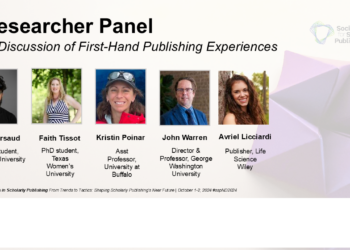
When we hear about science funding, there are two conflicting narratives at play: On one hand, scientists should work more closely with industry to answer questions that can be quickly turned into marketable products and services; on the other, when scientists are embedded too closely with industry, it is impossible to separate good science from good marketing. Like embedding journalists with the United Stated military, getting scientists closer to the front line can result in better reporting, yet it can also result in a biased and self-interested view.
The standard solution to the conflict between financial dependency and intellectual independence has been the disclosure of potential conflicts of interests (COI). Researchers and physicians should be free to open their hands (and their pockets) to industry influence, but they need to be completely transparent about these relationships.
Readers have a right to know if a group of authors have a financial stake in a product their paper is promoting, and it’s the job of the editorial office to ask for, and report on, these relationships. Patients have a right to know if their physician receives honoraria and speaking fees from a particular pharmaceutical company, which may explain why Dr. X always insists on prescribing a brand name drug over its generic alternative. And approval agencies, like the Food and Drug Administration, need to know whether the scientists it appoints to its review boards have vested interests in the outcomes of their decisions.
Expertise often comes with competing interests, and unless we wish to isolate the Ivory Tower from the rest of society, the former often comes with the latter. The goal is not to prevent those with competing interests from participating in important decisions — that would greatly depreciate the pool of credible experts — but to disclose those competing interests.
Over the years, journal editors, universities, hospitals, and granting institutions have been pressing for increased disclosure from their authors, employees and grant applicants. Scientists claim that the administration required to fill out these disclosure forms has been growing, and a lack of standardization means that a single COI form cannot be shared with many organizations. Often, COIs need to be updated annually.
In a piece appearing in the November 28 issue of the Journal of the American Medical Association, physicians Allan Lichter and Ross McKinney argue that a lack of standardization in COI disclosures increases the administrative burden on physicians and increases the chances of being accused of incomplete and misleading statements. As a solution, their committee — facilitated by the Institute of Medicine — recommends the creation of a centralize database for the disclosure and reporting of interests.
The Institute of Medicine report describes how such a system would work. Individuals would fill out fields that are designed for his/her functional role (e.g. as a researcher, author, reviewer, FDA advisor). The information would be stored in a secured — not public — database. Access is then facilitated when the individual provides the requester with a permit to “unlock” that record. A trusted institution may be provided with permanent access.
While the committee does an excellent job outlining the rationale and potential mechanism for how a centralized COI disclosure database would work, it is less clear about how it would be established, who would take control for its operation, and how it would be funded. The report proposes a non-profit company working under a subscription or membership model, but the details on who would be responsible and accountable for its operation are less clear.
In my mind, the difficulty in implementing such a centralized resource is that its beneficiaries comprise too many interest groups. Getting them all to agree and support the initiative is going to be difficult. While publishers would certainly benefit from a central disclosure database, it would be unfair to ask them to foot the bill when universities, granting institutions, hospitals, biomedical companies, government agencies and the general public all benefit, directly or indirectly, from the creation of the dataset. If there was ever a case for supporting a public good, this would be it. However, the US federal government has not been very diligent with enforcing its own policies, or does so selectively. And giving this role to the government may make it susceptible to funding issues or lobbying from industry who has an interest in minimizing its effect.
Among all of the stakeholders, individual researchers and clinicians reap the greatest benefits, in terms of time savings, for adopting a centralized COI database. They also suffer the consequences — article retraction, grant funding denial, and censure — for refusing to keep their records current and complete. Unless an organization requires that all submissions come from the database, an individual could still chose to submit COI details manually. So, rather than thinking of the COI database as a public good — a diffuse resource that someone else should fund and manage — it may be much more practical to think of it as a productivity tool for individuals, no different than a word processor or spreadsheet, purchased by those who need it most, or by those who employ these individuals.
Discussion
2 Thoughts on "Scientists Propose Central Database for Disclosing Conflicts of Interest"
Even with full disclosure, how does one really know whether an article reflects any bias in its findings or not? And if the same research is conducted by multiple scientists each with a different potential conflict of interest and each coming up with different findings, how does one determine which, if any, of the articles offers the closest approximation to the truth?
[In the interests of full disclosure I am a member of the committee headed by Drs. Lichter and McKinney.]
The committee felt that, in the main, individual scientists would not be happy with the government holding their COI data. Therefore any “institution” creating the database discussed would need to be a different kind of entity. As Phil points out, there are a lot of [different kinds of] institutions who would benefit from a centralized repository, so there should be some viable business models. Many of the different types of institutions involved were represented on the IOM committee and everyone was enthusiastic about the idea.
There is a group of people looking into the question of how what a business model and a “housing” entity might look like. They are due to report back to the committee in a few months.



